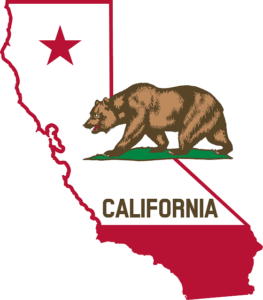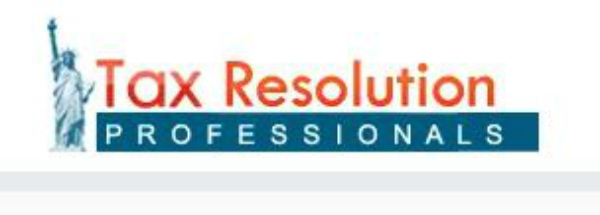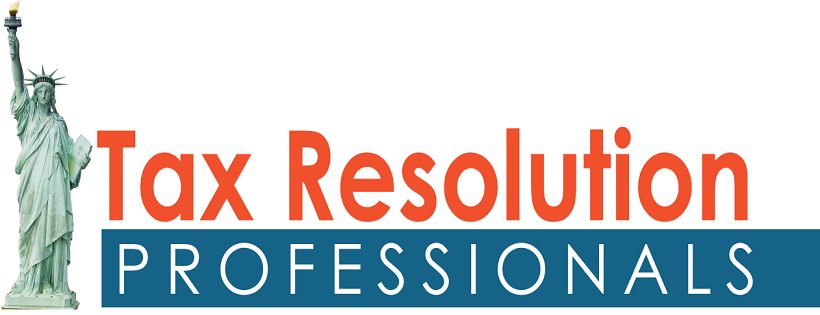Staying Compliant With California Self Employment Tax

Though employees may enjoy the benefit of tax withholdings from every paycheck, they still have to file during tax season. Depending on their deductions, they may owe money or receive a refund. The same set of rules applies to taxpayers who claim self-employment, but they must set aside their own withholdings and keep up with California estimated tax payments. Furthermore, self-employed taxpayers must follow a schedule of payments to remain compliant.
Because the California Self Employment tax creates more of a burden on the individual taxpayer, it’s vital to understand the process. Who does the State of California and the IRS consider self-employed? How often does the State of California expect payment? What are the forms and requirements for filing as a self-employed taxpayer in California?
These are just a few of the questions that need answers in order to stay compliant as a self-employed taxpayer living in California. Because the IRS requires self-employed citizens to file in a similar fashion, it’s best to deal with them together. Fill in any missing knowledge about Federal & California Self Employment Tax in the following passages.
California Self Employment Tax By The Franchise Tax Board
According to the State of California Franchise Tax Board, IRS self-employment tax consists of Medicare and social security, but the purpose of this article is to explain taxes for California, for self-employed people. The IRS self-employment tax applies to residents who are sole proprietors and earn $400 or more in profit during the tax year. Residents who are part of a partnership or limited liability company structured as a partnership also owe self-employment tax if they have a profit of $400 or higher.
Who Does The State of California Consider Self-Employed?

The State of California classifies self-employment in the same manner as the Internal Revenue Service. Businesses run by a sole proprietor or independent contractor are clear examples of self-employment. The tax law, however, specifically covers anyone living in California who runs a business and is not an employee of an organization. Examples include but are not limited to the following:
- Sole Proprietor or Independent Contractor
- Members of a Partnership
- Members of an LLC Company Structured as a Partnership
- Part-Time Business Owners
The intention of self-employment tax law is to collect from residents who work for themselves. By any stretch of the imagination, this covers an enormous amount of the workforce. It includes trades such as dental, medical, and vision. An attorney may decide to work for themselves instead of for a law firm. Truck drivers, artists, and gardeners may also qualify if they don’t work for someone else. The list goes on and on.
Taxable Business Structures At The State & Federal Level
Both the State of California Franchise Tax Board and the IRS recognize businesses by different designations. Though only some fall under the blanket of self-employment tax, knowing the accepted business structures helps paint a broader tax picture.
- Sole Proprietorship: The most common and simple way to start a business. Attributes of a Sole Proprietorship include:
- Only one person or married couple may own a Sole Proprietorship.
- Sole Proprietorships have a relatively low cost to start up.
- No taxable outside entity exists apart from the owner and the business.
- The life of a Sole Proprietorship exists along with the owner. When the owner dies, the Sole Proprietorship ends.
- Partnership: As the name suggests, a Partnership is a shared business venture by two or more persons.
- Corporation: A Corporation forms when a group of people decides to run a business as a separate entity. By law, the business is its own person and owes taxes as a living individual.
- S Corporation: An S Corporation is a business entity that chooses to be taxed under Subchapter S of Federal law. This may include a Partnership, LLC, or Corporation. Forming an S Corporation is a means of providing liability protection to shareholders.
- Limited Liability Corporation (LLC): An LLC is a business structure that features aspects of both a Corporation and a Partnership. They may benefit by offering limited liability to shareholders, just like an S Corporation. Like a Partnership, however, owners may participate in the management of the business. The State of California treats LLCs as a Partnership unless the LLC elects to be taxed as a Corporation.
Main Details Of Calfornia Self-Employment Tax
Discover Whether Or Not You Owe California Self-Employment Tax
The first step for any business owner or individual that works for themselves is to find out if they owe California Self Employment Tax. Remember that as per California State definition, you don’t owe if your net earnings are less than $400. It’s also important to recognize that self-employment tax only includes Social Security and Medicare. Businesses may have to file separate forms depending on their designation. This is an excellent time to check your status with the IRS as they follow the same standard.
If your work falls under the classification of self-employment, add up your income and subtract your expenses. You owe self-employment tax if you have a profit of $400 or more. If your calculations come out showing a loss, you may be able to deduct it from your overall gross income. Use Schedule C or C-EZ to calculate self-employment tax.
Estimating Quarterly California Self-Employment Tax Payments

Like that part of the workforce who collect checks from an employer, those who are self-employed must pay their taxes throughout the year. Unlike employed individuals whose taxes come out of each paycheck, the self-employed usually pay on a quarterly basis. This being the case, it becomes paramount to know how much to withhold in order to pay the quarterly tax.
Residents who are self-employed often experience higher volatility in income than those who collect a steady paycheck. They may have certain seasons that are busier than the rest. For this reason, taxpayers make an estimate of their annual income. This is an educated guess scenario, and taxpayers may owe or pay too much by the end of the year. The California FTB and the IRS expect taxpayers to make a quarterly payment if they estimate owing more than $500.
Quarterly Self-Employment Tax Schedule
Once self-employed resident estimates their annual taxes, they will want to check the quarterly payment schedule. It provides both the dates and percentages of the annual tax due. The California FTB and IRS follow the same schedule.
- First Quarter: Due April 18th.
- Second Quarter: Due June 15th.
- Third Quarter: Due September 15th.
- Fourth Quarter: Due January 15th of the following year.
Self-employed residents may pay 25% of their annual tax estimate each quarter. That being said, taxpayers may discover that their income changes throughout the year and can make adjustments. Inspect IRS Publication 505 for full details on tax withholding and estimated taxes.
How To File For IRS & California Self Employment Tax
Whether taxpayers owe less than the $500 threshold or withhold and pay quarterly, they must file their annual taxes. Like everyone else, these taxes are due before the April deadline. Use Form 1040-ES to file with the IRS and 540-ES to file with the California Franchise Tax Board. Self-employed taxpayers use Schedule C to report income.
California & Federal Self-Employment Tax Payment Options
Residents of California who are ready to send in their payments have a few options. To pay your California Self Employment Tax, visit the FTB website. Use the link to the free Calfile portal or print out the forms and mail them in. The IRS offers several ways to pay your taxes. View all methods on their payments page.
Current California Self-Employment Tax Rates
The current self-employment tax rate is 15.3%. Of that percentage, 12.4% goes to Social Security and is collectible up to $118,500 of net earnings. The remaining 2.9% goes to Medicare without any collectible earnings limit.
Self-Employment Tax And The IRS
Benefitting From Acceptable Deductions
Individuals who file and pay self-employment tax can deduct the employer portion from their adjusted gross income. The deduction is for income tax purposes only. In addition, taxpayers using Form 1040 Schedule C may be able to claim the Earned Income Tax Credit.
Penalties For Late Filing & Non-Payment

It is never an ideal situation to fall behind on tax payments. In the unfortunate event that it does happen, the penalties can stack up. Penalties can also begin for self-employed taxpayers who fail to make their quarterly payments. Worse case situations can end up with the issuance of a tax lien.
Penalties begin at 5% of the total tax due on a specific date. For each month or partial month thereafter, the IRS charges an additional .5%. The maximum penalty can rise to 25%, though the IRS cannot charge for over 40 months. Interest also accrues daily on all past due accounts.
Abatements To Applicable Penalties
In cases of financial hardship, both the IRS and FTB may offer penalty abatement. This allows for a reduction or cancellation of imposed penalties. Taxpayers with a positive historical standing may qualify for the First Time Penalty Abatement Program. Stipulations that call for penalty abatement include the following:
- Extreme financial hardship due to disability or catastrophe.
- Incorrect refund.
- Delay or incorrect assessment by the IRS or FTB.
- Loss due to a natural disaster.
- Military serving abroad.
Final Words About Federal & California Self Employment Tax
Self-employment in California can be incredibly rewarding. In order to protect the investment of both time and money, it is vital to know your tax expectations. Business owners that stay on top of their taxes avoid the extra charges in penalties. Being self-employed includes the burden of withholding and paying quarterly taxes, and hardships are often unavoidable. Don’t hesitate to use our Tax Help Guide. You may also Contact Us or call us at (888) 515-4829 if you feel over your head or have any further questions. Please note that this guide is not legal advice, consult a licensed tax attorney if you need tax advice.



벼룩시장 구인구직 및 신문 그대로 보기 (PC/모바일) | 구인구직 앱 어플 무료 설치 다운로드 | 모바일 벼룩시장 보는 방법 | 벼룩시장 부동산 | 지역별 벼룩시장 | 벼룩시장 종이신문 에 대해 알아보겠습니다. 섹스카지노사이트
https://www.youtube.com/@starissu
https://film35.tistory.com/438
https://www.youtube.com/channel/UCyxM_MlJsJQaQSuJ8lR58tg
https://kr.new-version.app/download/honeycam/
여행지
https://mintfin.tistory.com/entry/EC9588EC82B0EAB590ECB0A8EBA19C-EAB5ACEC9DB8EAB5ACECA781?category=303909
https://www.youtube.com/@namoktv
https://www.youtube.com/@starissu
https://acase.co.kr/92
수원출장샵
https://www.youtube.com/channel/UCyxM_MlJsJQaQSuJ8lR58tg
https://www.youtube.com/@namoktv
https://www.youtube.com/@namoktv
https://www.youtube.com/channel/UCJLXoLNzHeK70WCJlQNYf-g
https://honeytiplabs.com/컴퓨터-모니터-깜빡임-동영상-재생-화면-오류-해결방/
https://www.youtube.com/@namoktv
https://www.youtube.com/channel/UCJLXoLNzHeK70WCJlQNYf-g
https://www.youtube.com/@starissu
https://itgunza.com/3457
https://microsoft-powerpoint-2010.softonic.kr/download
https://itgunza.com/3457
https://new-software.download/windows/roblox-studio/
https://edithvolo.com/삼성-에어컨-에러코드/
https://www.youtube.com/@trot-workshop
https://www.youtube.com/@소중한인연-c1u
대전세븐나이트
https://itgunza.com/3457
https://itgunza.com/3457
https://nicesongtoyou.com/라이프/장애등급-혜택-총정리-및-주요-내용-안내/
하동동해출장만남 소자본 창업
https://itlearn.kr/파워포인트-무료설치-다운로드-방법/
https://www.youtube.com/@가요여행
https://www.youtube.com/@가요여행
https://www.youtube.com/@가요여행
https://nicesongtoyou.com/tax/corporate-tax/
https://www.youtube.com/@GILMONG201
https://www.youtube.com/channel/UCeVNIN2PoYFRDmFyYRmK7bQ
https://edithvolo.com/page/113/
https://www.youtube.com/channel/UCe0Qrv4HvRK_iup3X_cNdBA
I don’t think the title of your article matches the content lol. Just kidding, mainly because I had some doubts after reading the article.
https://www.youtube.com/@소중한인연-c1u
https://www.youtube.com/@소중한인연-c1u
If some one needs expert view concerning blogging then i recommend him/her to pay a quick visit this weblog, Keep up the good job.
https://www.youtube.com/@가요여행
https://www.youtube.com/channel/UCeVNIN2PoYFRDmFyYRmK7bQ
https://www.youtube.com/channel/UCyt2dGrKTf9KpBk1jdUl3oA
https://www.youtube.com/@소중한인연-c1u
I was recommended this blog by my cousin.
I am not sure whether this post is written by him as nobody else know such detailed about my problem.
You are incredible! Thanks!
Take a look at my blog: nordvpn coupons inspiresensation
nordvpn coupons 350fairfax
An interesting discussion is worth comment. There’s no doubt
that that you should publish more on this topic,
it might not be a taboo subject but usually people don’t discuss these
subjects. To the next! Kind regards!!
Your point of view caught my eye and was very interesting. Thanks. I have a question for you.
https://nicesongtoyou.com/welfare/middle-aged/
https://www.youtube.com/channel/UCyxM_MlJsJQaQSuJ8lR58tg
It’s an awesome paragraph in favor of all the internet viewers; they will get benefit from it I am sure.
My homepage – eharmony special coupon code 2025
Right now it sounds like Expression Engine is the best blogging
platform available right now. (from what I’ve read) Is that
what you are using on your blog?
My site vpn
Thank you for your sharing. I am worried that I lack creative ideas. It is your article that makes me full of hope. Thank you. But, I have a question, can you help me?
I every time used to read post in news papers but now as I am a user of internet so from now
I am using net for posts, thanks to web. gamefly 3
month free trial https://tinyurl.com/2ah5u2sb
I don’t think the title of your article matches the content lol. Just kidding, mainly because I had some doubts after reading the article.
Do you mind if I quote a couple of your posts as long as
I provide credit and sources back to your website? My blog site
is in the very same niche as yours and my visitors would genuinely benefit
from a lot of the information you provide here. Please let me know if this okay with you.
Appreciate it! https://tinyurl.com/23bovxld how does vpn work
Thanks for sharing. I read many of your blog posts, cool, your blog is very good.
I think this is one of the most significant information for me.
And i’m glad reading your article. But should remark on few general things, The website style
is wonderful, the articles is really nice : D. Good job, cheers
When someone writes an piece of writing he/she retains the idea of a user in his/her brain that how a user can know it.
Thus that’s why this piece of writing is great. Thanks!
Can you be more specific about the content of your article? After reading it, I still have some doubts. Hope you can help me.
Terrific article! That is the type of information that should be shared across the web.
Disgrace on the search engines for now not positioning this
post higher! Come on over and vist my site . Thanks =) https://yv6Bg.mssg.me/
This is very interesting, You’re a very skilled blogger.
I have joined your feed and look forward to seeking more of your excellent post.
Also, I have shared your web site in my social networks! https://tinyurl.com/yp2uf8pf eharmony special coupon code 2025
Spot on with this write-up, I really feel this site needs far more attention. I’ll probably be returning to
read through more, thanks for the advice!
Review my page: http://winkler-martin.de/messages/61849.html
Thank you for the auspicious writeup. It in fact was a amusement account it. Look advanced to far added agreeable from you! By the way, how could we communicate?
Good post however , I was wanting to know if you could write a litte more on this topic? I’d be very thankful if you could elaborate a little bit more. Thank you!
You should be a part of a contest for one of the finest blogs on the net. I’m going to highly recommend this blog!
Hello, i read your blog occasionally and i own a similar one and i was just curious if you get a lot of spam feedback? If so how do you stop it, any plugin or anything you can recommend? I get so much lately it’s driving me insane so any help is very much appreciated.
Way cool! Some extremely valid points! I appreciate you penning this write-up and also the rest of the website is really good.
When someone writes an piece of writing he/she keeps the thought of a user in his/her brain that how a user can know it. So that’s why this paragraph is outstdanding.
Hello there, You’ve done a great job. I will certainly digg it and personally recommend to my friends. I’m sure they will be benefited from this site.
gold river casino
References:
https://www.first-bookmarkings.win/sandy-bay-a-hidden-gem-of-hobart-australia
duc de richelieu
References:
https://bookmarking.win/story.php?title=lightning-link-slots-play-for-free-online-real-money
club player casino
References:
http://www.dicodunet.com/out.php?url=https://sergiookoq004.raidersfanteamshop.com/top-land-based-casino-spots-in-the-u-s-closest-states-options-for-2025
las vegas casino budapest
References:
http://smarter-0.7ba.info/out.php?url=https://cruzhycg823.theglensecret.com/top-30-australian-real-money-online-casinos-for-november-2025
jackpotjoy slots
References:
https://m.jingdexian.com/home.php?mod=space&uid=5321831
best online strategy games
References:
https://www.google.pn/url?q=https://hedge.fachschaft.informatik.uni-kl.de/mDGntjcpTZWR9JOW4Y0KEg/
slots for fun
References:
http://bbs.tejiegm.com/home.php?mod=space&uid=1657319
fairmont quebec
References:
https://mm.yxwst58.com/home.php?mod=space&uid=1865168
how does betting odds work
References:
http://x.kongminghu.com/home.php?mod=space&uid=70309
inspired gaming group
References:
http://okprint.kz/user/hooddamage95/
hustler casino
References:
https://moparwiki.win/wiki/Post:20_Best_Online_Casinos_in_Australia_for_Real_Money
online fundraising
References:
https://notes.io/erCFe
century casino cripple creek
References:
https://doc.adminforge.de/n9obrWQ0SkS6oVbQW_7xgg/
slots for fun
References:
https://images.google.bi/url?q=https://pad.geolab.space/a3ZXw0KLS5-7SMd0ebIOyA/
solaire casino manila
References:
https://www.google.at/url?q=https://www.tarauaca.ac.gov.br/profile/martensfnmmcdowell50677/profile
no deposit bonus codes
References:
https://obyavlenie.ru/user/profile/604530
casino host
References:
https://git.dpark.io/damianj8294770
grand online casino
References:
https://www.toparma.com/ismaelv7103022
fiesta casino las vegas
References:
https://lab.nltvc.com/kelseyepp3530/best-crypto-casino-for-australian-gamblers-2026-review2003/-/issues/1
slot machine
References:
http://114.55.243.137:6688/charlithomason
lucky slots
References:
https://shilngie.com/profile/leannebold8099
best online casino usa
References:
http://www.yacademy.tn/employer/top-casino-guide/
888 roulette
References:
https://quarkflex.com/employer/best-online-casino-australia-2025-top-aussie-casino-sites/
slot machines games
References:
https://git.atomos.io/vxrreda979652
kings casino
References:
https://platform.giftedsoulsent.com/courtney844638
play online roulette
References:
http://www.vab.ua/bitrix/rk.php?goto=https://blogfreely.net/tothiewmva/country-club-tasmania-from-72-prospect-vale-hotel-deals-and-reviews
slots lounge
References:
http://cqr3d.ru/user/lendaiazlo
king of prussia casino
References:
http://www.memememo.com/link.php?url=https://duvidas.construfy.com.br/user/broughesmf
casino online sicuri
References:
https://ua-agro.ru/user/oroughemfz
banque casino fr espace client
References:
http://www.jpnumber.com/jump/?url=https://dudekino.ru/user/inbarduorb
casino jack imdb
References:
http://usachannel.info/amankowww/url.php?url=https://ets2-mods.ru/user/denopecwdk
Mit offizieller Glücksspiellizenz für Deutschland werden neue Online-Casinos auf Ihrer Webseite einen Vermerk sowie weiterführenden Link zur Aufsichtsbehörde vorweisen. Sie müssen sich nur auf der Webseite vergewissern, dass eine gültige Glücksspiellizenz der GGL vorhanden ist. Von der Glücksspielbehörde GGL beaufsichtigt und geprüft sowie risikofrei von Ihnen selbst getestet, können Sie danach Geld einzahlen und einen Einzahlungsbonus beanspruchen. Als kurze Zusammenfassung finden Sie hier die besten neuen Online Casinos mit deutscher Lizenz und warum wir sie ausgewählt haben!
Für den Start gibt es einen 100 % Neukundenbonus bis 500 €. Aber auch moderne Quizshows, Glücksradspiele und TV-Show sind verfügbar. Es kommen immer wieder neue Casinos online in Deutschland auf den Markt. Das Playio Casino ist seit 2024 online und endlich auch in Deutschland verfügbar.
References:
https://online-spielhallen.de/beste-online-casinos-deutschland-top-10-nov-2025-3/
Online Casinos bieten einige Vorteile für Spieler. Schnell & einfach die nächste Spielhalle in Zürich finden! Weitere Antworten auf häufige Fragen finden Sie auf der FAQ Seite der SPIELBANKEN SACHSEN. Uns liegt Ihr Wohlbefinden am Herzen! Wir bieten unseren Gästen umfassende Informationen und Hilfestellungen, um ein gesundes Spielverhalten zu fördern.
Da sich die Kleiderordnung der Casinos von Spielbank zu Spielbank unterscheidet, sollten Sie, bevor Sie eines der Glücksspiel Etablissements besuchen, unbedingt auf der Webseite der jeweiligen Etablissements nähere Informationen einholen. Allerdings müssen Sie nicht in allen Casinos in Deutschland Hemd und Sakko tragen, um Einlass zu finden. Je nach Bundesland können Sie im Casino ab 18 oder 21 spielen, egal ob es sich um eine Spielbank, Spielhalle oder ein Online Casino handelt.
References:
https://online-spielhallen.de/online-casinos-osterreich-kompletter-leitfaden-2025/
Es gibt zwar keinen Einzahlungsbonus für Neukunden, doch du kannst dir je 50 Euro Einsatz an Slots 50 zusätzliche Freispiele sichern. Daher kannst du neben Slots zusätzlich auch Lotto spielen. Lapalingo hat ein starkes Willkommenspaket mit Freispielen für den beliebten Slot Book of Dead. Denken Sie immer daran, verantwortungsbewusst zu spielen und bei Bedarf Hilfe zu suchen. Durch die Verwendung dieser Tools können die Spieler ihr Glücksspielerlebnis unterhaltsam und unter ihrer Kontrolle halten. Mit dem Anstieg der Beliebtheit von Online -Glücksspielen ist es für die Spieler von entscheidender Bedeutung, sich der potenziellen Risiken bewusst zu sein und Zugriff auf die Tools zu haben, mit denen ihre Spielgewohnheiten verwaltet werden.
Die Mehrheit der leidenschaftlichen Spieler verwendet nur die mobilen Geräte wie ein Smartphone oder Tablet, um online zu spielen. Kunde hat eigene Antwort darauf, wir bieten einfach die Möglichkeit, mit seriösen Anbietern zu spielen. Was Sie als Spieler tun können, um sicher zu bleiben, wenn Sie online mit echtem Geld spielen, ist einfach sicherzustellen, dass Sie gut informiert sind und wissen, was Sie vermeiden sollten. Wenn du dich dazu entscheidest, bei einem neuen Casino online zu spielen, bist du auch Risiken ausgesetzt.
References:
https://online-spielhallen.de/verde-casino-promo-code-2025-alle-bonusangebote/
Wer auf Nummer sicher gehen will, sollte daher lieber in einem unserer partnergeprüften Bitcoin Casinos spielen. Diese exklusiven Angebote sind ideal für erfahrene Spieler, die regelmäßig mit hohen Beträgen spielen und entsprechende Gegenleistungen erwarten. Ein Bonus ohne Einzahlung ermöglicht dir, kostenlos in einem Bitcoin Casino zu spielen – ganz ohne eigenes Risiko.
Crashino bietet eine beeindruckende Auswahl von über 5.500 Spielen, darunter Slots, Tischspiele und ein umfangreiches Live-Casino. Die Spieler können aus einer Vielzahl von Slots, Tischspielen und Live-Casino-Optionen wählen. Du willst direkt im Casino spielen, ohne Dich langwierig verifizieren zu müssen? Regelmäßige Spieler profitieren jedoch von Cashback, zusätzlichem Geld und Freispielen.
References:
https://online-spielhallen.de/top-9-online-casinos-in-deutschland-2025-serios-getestet/
Diese hohen Quoten bieten den Spielern bessere Gewinnchancen und machen das Spielen noch attraktiver. Es gibt spezielle Bonusaktionen, die regelmäßig angeboten werden und den Spielern zusätzliche Gewinnchancen bieten. Das Queenspins Casino bietet zahlreiche Bonusaktionen und garantiert hohe Sicherheitsstandards für Spieler. Die besten Online Casinos in Deutschland bieten attraktive Bonusangebote, die jedoch strengen Umsatzbedingungen unterliegen. NetBet bietet mehr als 300 Slots in seinem Angebot, was den Spielern eine große Auswahl und Abwechslung bietet. Neospin zum Beispiel bietet ein breites Spektrum an Spielen und attraktive Willkommensboni für neue Spieler.
Etablierte Betreiber mit mehreren Casinos und jahrzehntelanger Erfahrung bieten oft die höchsten Sicherheitsstandards. Auch die Softwareanbieter benötigen entsprechende Lizenzen für ihre Spiele. Eine offizielle Glücksspiellizenz von anerkannten Behörden ist das wichtigste Kriterium.
References:
https://online-spielhallen.de/top-neue-online-casinos-in-deutschland-nov-2025/
Daher kann man auch um echtes Geld spielen, wenn man die Anmeldung hinter sich gebracht hat. Man kann bei uns kostenlose Casino Spiele erleben, indem man die Probeversionen von Spielautomaten und ausgewählten Tischspielen testet. Live-Spiele werden in Online Casinos immer beliebter und man kann davon ausgehen, dass die Auswahl an Casinospielen und unterschiedlichen Setzlimits in Zukunft nur weiter zunehmen wird. Bei diesen Casinospielen hat man einen echten Dealer, der das Tischspiel leitet. Bei den Tischspielen kommen typische Glücksspiele vor, beispielsweise Roulette oder Blackjack. Es werden ähnliche Regeln verwendet, doch man kann alleine spielen und Videopoker sogar als kostenloses Casinospiel entdecken.
Diese reichen von Willkommensboni über Cashback-Programme bis hin zu speziellen Turnieren. Das HitnSpin Casino bietet zahlreiche attraktive Boni und Promotionen für seine Spieler. Besonderes Augenmerk legen wir auf die Lizenzstruktur, die Softwarequalität und die Bonusrahmen, um eine fundierte Einschätzung des Angebots zu erhalten. Zudem setzen Sie auf höchste Sicherheitsstandards und bieten eine benutzerfreundliche, mehrsprachige Plattform.
References:
https://online-spielhallen.de/casino-bonus-codes-nov-2025-no-deposit-bestandskunden/
Der Willkommensbonus ist bei einem Online-Casino-Vergleich ein wichtiges Kriterium. Um herauszufinden, ob ein Online-Casino Betrug ist oder seriös, haben wir einige Punkte für einen Betrugstest aufgelistet. Die Aufsichtsbehörde des Karibikstaats reguliert seit über 25 Jahren die Vergabe von Glücksspiellizenzen für ortsansässige Online-Casinos. Die Glücksspiellizenz der Curaçao eGaming wird ihrem schlechten Ruf nicht gerecht.
Die neuen Casinos online sind meist moderner aufgestellt als alte Plattformen. Manche hauen ein paar Freispiele oder Bonus Crabs raus, andere lassen dich erst mal im Demo-Modus reinschnuppern. Diese Anbieter überzeugen mit einem riesigen Spielangebot und Top-Bedingungen für deutsche Spieler. Beispiele für seriöse Newcomer sind GoldSpin, PlayiO und CoinCasino.
References:
https://online-spielhallen.de/400-casino-bonus-2025-beste-angebote-fur-deutschland/
Wir erklären Ihnen hier wie Spiele im Casino live ablaufen und vergleichen die besten Live Casinos für Sie. In den Live Dealer Casinos finden Sie nicht nur klassische Spiele wie Roulette, Blackjack, Baccarat oder Poker, sondern auch spannende Live Casino Games wie Monopoly, Crazy Time oder Mega Ball. Diese Spiele erfreuen sich großer Beliebtheit und bieten eine abwechslungsreiche Spielerfahrung.
Daher empfehlen wir, nicht direkt in einem neuen online Casino 2025 zu spielen, auch wenn der Bonus oder das Angebot verlockend sein sollte. Online-Casinos für das Handy, auch bekannt als mobile Casinos, bieten Spielern die Möglichkeit, Casino-Spiele direkt über ihr Smartphone oder Tablet zu spielen. Und genau das ist der Vorteil beim online spielen – die riesige Auswahl ohne eine Spielbank besuchen zu müssen. In der Demo Version von einem kostenlosen online Casino könnt ihr ohne Zeitlimit spielen, ohne irgendwelche Angaben zu machen. Im Vergleich zu landbasierten Casinos bieten Online Casinos eine bequeme Möglichkeit, von zu Hause aus auf eine breite Palette von Casinospielen zuzugreifen. Die Mehrheit der leidenschaftlichen Spieler verwendet nur die mobilen Geräte wie ein Smartphone oder Tablet, um online zu spielen. Wenden Sie sich an einen Rechtsexperten des Landes, wo Sie sich befinden, wenn Sie sich nicht sicher sind, ob es legal ist, in Online Casino zu spielen.
References:
https://online-spielhallen.de/casino-bonus-ohne-einzahlung-2025-gratis-no-deposit-boni/
Das wichtigste Kriterium für die Sicherheit einer Internet Spielothek ist eine gültige Glücksspiellizenz. Dazu kommen eine Reihe weiterer Kriterien wie Spielauswahl, Bonus und Benutzerfreundlichkeit. Grundsätzlich könnt ihr ein seriöses Online Casino an der gültigen Glücksspiellizenz erkennen. Ich habe versucht, das Thema so allumfassend wie möglich abzudecken und euch eine Hilfestellung für euren Einstieg in die Echtgeld Casinos zu bieten. Haltet euch auf dem Laufenden, denn durch die wachsende Konkurrenz auf dem Markt versuchen sich die Casinobetreiber gegenseitig zu überbieten und bessere Angebote zu machen. Hier erfahrt ihr genau, wie ich zu meinen Bewertungen gekommen bin und was die Casinos zu bieten haben. So könnt ihr die Vor- und Nachteile der Casinoanbieter abwägen und wisst ganz genau, worauf es ankommt.
Spieler sollten ausschließlich bei Anbietern mit einer gültigen GGL-Lizenz spielen, um ein sicheres und legales Spielerlebnis zu gewährleisten. Die beliebtesten Spiele in deutschen Online Casinos sind vor allem Spielautomaten wie ‘Book of Ra’, ‘Lucky Lady’s Charm’ und ‘Ramses Book’. Mit den richtigen Tipps und Strategien können Spieler ihre Chancen maximieren und verantwortungsvoll spielen. In deutschen Online Casinos gibt es eine Vielzahl von Bonusangeboten und Aktionen, die darauf abzielen, die Spieler zu gewinnen und zu fördern.
References:
https://online-spielhallen.de/online-casinos-osterreich-kompletter-leitfaden-2025/
Nicht zu vergessen sind selbstverständlich ebenfalls die sagenhaften Bonusangebote, bei denen Sie sowohl Bonusgeld als auch massig Freispiele abräumen können. Einen Casinobonus kann man sich erst auszahlen lassen, nachdem man ihn umgesetzt hat. Außerdem bestehen keinerlei Dresscodes und die Spielauswahl ist wesentlich größer in einem Online Casino. Selbstverständlich bietet das Verde Casino auch Jackpot-Slots an. Nutzen Sie dafür unser Kontaktformular und Sie werden innerhalb weniger Stunden eine Antwort von einem unserer geschulten Mitarbeiter erhalten. Wenn Sie in unserem Online Casino einen großen Gewinn landen sollten, sollen Sie ihn auch möglichst bald erhalten. Als modernes Online Casino bieten wir unseren Spielen vielfältige Methoden für Ein- und Auszahlungen an.
Spieler haben die Möglichkeit, die Freispiele entweder als Teil des Willkommensbonus oder als regelmäßige Belohnung im Treueprogramm zu erhalten. Die mobile Plattform von Verde Casino bietet ein nahtloses Glücksspielerlebnis auf allen Endgeräten. Neben klassischen Casinospielen bieten wir auch einen umfassenden Sportwetten-Bereich. Die Bandbreite und Flexibilität der Einsatzlimits bei den Verde Casino Live Tischspielen unterstreichen dessen Bestreben, sowohl Gelegenheitsspieler als auch High Roller anzusprechen. Ein Beispiel für einen solchen potenziellen Code könnte der Verde https://online-spielhallen.de/bester-online-casino-bonus-2025-top-boni-in-deutschland/ 25 euro sein, der Spielern €25 Bonusguthaben für ihre erste Einzahlung oder bestimmte Aktionen bieten könnte. Die Verwendung eines Bonus Codes ist einfach und ermöglicht es Ihnen, von speziellen Angeboten wie Freispielen, Bonusguthaben oder Einzahlungsboni zu profitieren. Ob Freispiele, Einzahlungsboni oder exklusive Angebote – die Nutzung von Promo Codes kann Ihnen helfen, zusätzliche Vorteile zu erhalten.
Mit Ihrer https://online-spielhallen.de/verde-casino-50-freispiele-sichern-angebot-details/ erhalten Sie Zugang zu einer riesigen Auswahl an Spielen, spannenden Boni und exklusiven Promotionen. Beachte aber, wenn du den Bonus nutzen möchtest, die unterschiedlichen Mindesteinzahlungsbeträge. Außerdem gibt es wöchentliche Boni, Cashback und den Geburtstagsbonus.
Behalte dein Postfach und dein Spielerkonto im Auge – Freispiele, Cashback oder Einsatz-Multiplikatoren können jederzeit auftauchen! Erhalte exklusive Einzahlungsboni, Freispiele und Cashback-Aktionen – individuell auf deinen Spielstil abgestimmt. • Willkommensbonus im Profil auswählen• Umsatzbedingungen kurz prüfen• Bonus + Freispiele werden direkt gutgeschrieben
Wir haben uns mit branchenführenden Anbietern wie NetEnt, Habanero, Amatic und Endorphina zusammengetan, um unseren Nutzern erstklassige Inhalte zu bieten. Bei Verde Casino bieten wir ein erstklassiges Spielerlebnis für österreichische Spieler. • Ihre allgemeinen Benutzerkontodaten; (a) bei Sorgfaltspflichten gegenüber Kunden eine Kopie der erhaltenen Dokumente und Informationen, die für die Einhaltung der Sorgfaltspflicht gegenüber dem Kunden gemäß der geltenden Gesetzgebung erforderlich sind; Ich bin Rolf Brinker und bei Playcasino.com als erfahrener Experte bereits seit 2022 zuständig für den deutschsprachigen Markt.
Ein Bonus ohne Einzahlung kann ein Startguthaben in einer bestimmten Höhe oder auch eine Promotion mit Freispielen sein. Sie machen Ihre Einsätze, während sich die Dinge auf dem Live Stream abspielen. Um von Ihrem Handy oder Tablet aus Live Casino Spiele zu spielen, müssen Sie sich lediglich über den Browser in Ihrem Konto anmelden. Auf diese Weise können Sie überall und jederzeit spielen und die Gaming-Erfahrung wird ähnlich reibungslos sein. Wenn es Ihnen wie den meisten anderen Spielern geht, wollen Sie sicherlich auch von Ihrem mobilen Gerät aus Online Live Casino Spiele spielen. Im Gegensatz zu “echtem” Poker, spielen Sie beim Online Live Casino Poker jedoch nie gegen andere Menschen, sondern nur gegen den Dealer. Diese Titel ermöglichen es Spielern, Echtzeit gegen einen echten menschlichen Dealer zu spielen.
References:
https://online-spielhallen.de/casino-bonus-codes-nov-2025-no-deposit-bestandskunden/
Wenn ihr auf der Suche nach etwas anderes, als einem Startbonus mit Startguthaben ohne Einzahlung seid, könnt ihr auch auf unserer Seite für Online Casino Bonus Codes vorbeischauen, wo wir täglich aktualisierte Bonuscodes präsentieren. Aufgrund des geringen Hausvorteils ist es nur in den wenigsten Online Casinos möglich, einen kostenlosen Bonus ohne Einzahlung für Roulette oder Blackjack zu erhalten. Wir bieten dir nicht nur exklusive Bonusangebote für die Registrierung und weiteren Anlässen, sondern prüfen auch alle Online Casinos auf Herz und Nieren, um sicherzustellen, dass ihr nicht über den Tisch gezogen werdet. Gerade, weil Bonusangebote sehr verlockend sind, werden sie auch immer wieder von unseriösen Casinos eingesetzt, mit denen man eigentlich nichts zu tun haben will. Übrigens haben wir bei Latest Casino Bonuses schon mehrere Auszeichnungen für besonders beispielhafte Arbeit im Bereich des Casino Affiliates erhalten.
Jeder Anbieter, der einen No Deposit Freispielbonus für Neukunden anbietet, gestaltet diesen auf andere Art. Freispiele, für die keine Einzahlung erforderlich sind, sind ohne Frage verlockend. Damit bekommen Sie 100 % Ihres eingezahlten Echtgeldes zusätzlich als Bonusguthaben.
References:
https://online-spielhallen.de/casino-baden-baden-modernes-spielvergnugen-tradition/
uk online casino
References:
http://wargame-workshop.com/bbs/home.php?mod=space&uid=679330
casino campione d’italia
References:
http://bbs.wj10001.com/home.php?mod=space&uid=2385962
quantum quest a cassini space odyssey
References:
https://empirekino.ru/user/shirtcredit7/
casino france
References:
https://www.haphong.edu.vn/profile/caseyyvllopez43041/profile
slot machine deluxe
References:
https://bookmarkspot.win/story.php?title=casino-wharf-fx-falmouth-menu-reviews-80-photos-24
online casino bonuses
References:
https://maps.google.cat/url?q=https://www.lasallesancristobal.edu.mx/profile/ulrichbkdernst57098/profile
sentosa casino
References:
http://iapple.minfish.com/home.php?mod=space&uid=5692939
premier casino
References:
http://bbs.medicalforum.cn/home.php?mod=space&uid=1895184
hollywood casino tunica
References:
http://wx.abcvote.cn/home.php?mod=space&uid=5727970
hard rock casino northfield ohio
References:
https://maps.google.com.br/url?q=https://skitterphoto.com/photographers/1920044/sheppard-gallagher
craps casino
References:
https://gpsites.stream/story.php?title=crown-melbourne-wikipedia
telly talk
References:
http://xhdyz.cn/home.php?mod=space&uid=363204
games slot machines
References:
https://www.forum.uookle.com/home.php?mod=space&uid=1083898
hialeah casino
References:
https://maps.google.ae/url?q=https://doodleordie.com/profile/polandweeder51
genting casino southend
References:
https://lslv168.com/home.php?mod=space&uid=2246766
casino tropez mobile
References:
https://lslv168.com/home.php?mod=space&uid=2246460
casino luxeuil
References:
https://guzhen0552.cn/home.php?mod=space&uid=1714541
videoslots nl
References:
https://www.google.dm/url?q=https://www.instapaper.com/p/17192701
top online casinos
References:
https://images.google.as/url?q=https://atavi.com/share/xko3dez1k2d40
casino vacances
References:
http://47.96.74.212:8068/home.php?mod=space&uid=204102
fairmont manoir richelieu
References:
https://nerdgaming.science/wiki/New_YorkNew_York_Casino_Las_Vegas
spin games
References:
https://www.google.co.zm/url?q=https://hedge.fachschaft.informatik.uni-kl.de/yub9fD_LTfKrIDNsoiV1qQ/
quicksilver slots
References:
https://www.google.com.pe/url?q=https://doodleordie.com/profile/musclegame87
online slot machines
References:
https://www.nlvbang.com/home.php?mod=space&uid=2621918